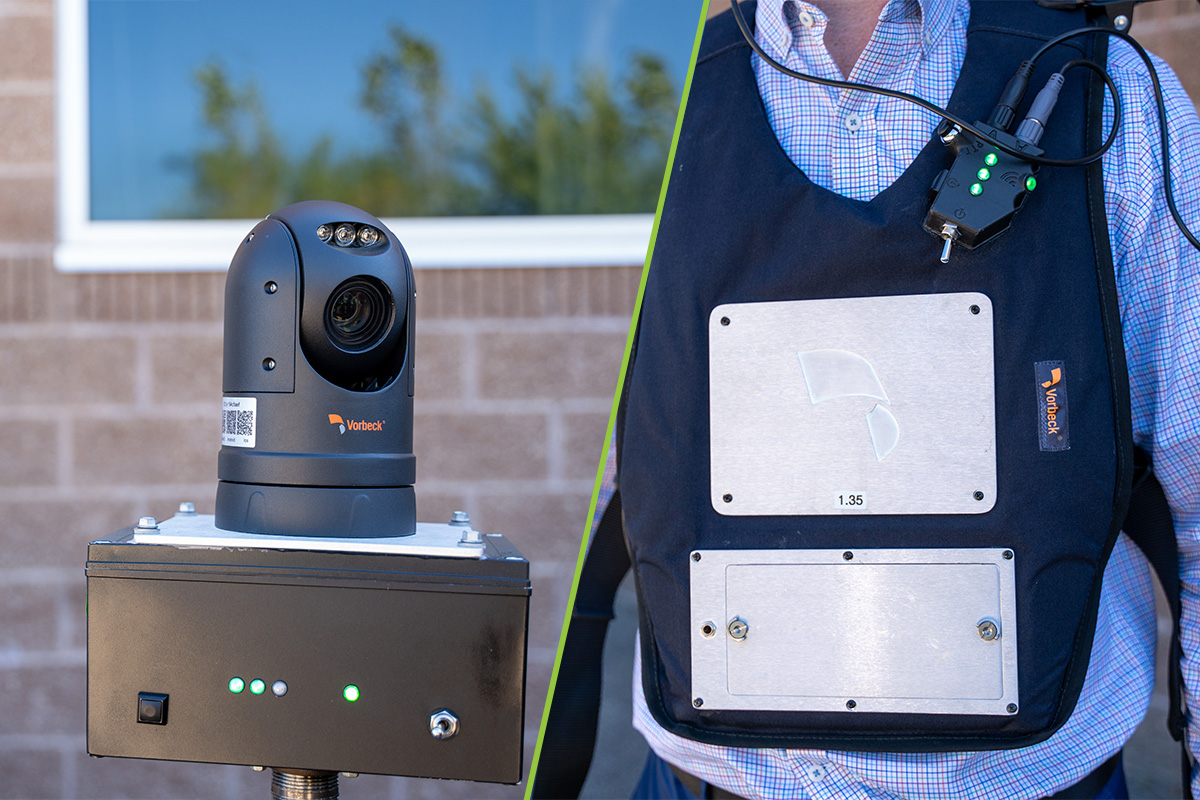
One of our newest offerings at BAYCOM comes from Vorbeck and takes advantage of the Rajant InstaMesh® Technology we wrote about earlier this year to extend the reach of mobile communications beyond what was previously possible.
The Vorbeck Wearable Communications System features HD4 Harnesses (vests) that securely deliver voice, streaming video, and data to incident command, team members, off-site coordinators and subject-matter experts. The vests also link to each other while on the move and, along with the system’s rapid deploy ND4 Drop Nodes, automatically form a secure, reliable network to ensure uninterrupted voice and data connectivity—even in areas where line-of-sight is impeded or where no RF signal exists.
Extending Reach
When BAYCOM Communications Consultant Dan Severud talks about the system with customers, he says, “They’re amazed that it can stretch data out into the field with a temporary network, miles away, and still have connectivity. They’re able to produce coverage where they never thought possible.”
Ray Sauro, Vorbeck Vice President of Business Development, shared with us the results of recent testing of the system’s reach.
“We’ve been able to get signal and video from the tops of skyscrapers to the street level. We’ve gone down into dams and underground. In a recent California wildfire demo we went from the town, up over the hill and down to the other side of the hill—and we’re able to make phone calls through the system,” said Sauro. “It has great promise.”
Enhancing Safety
The Drop Node, a Wi-Fi hotspot that wirelessly live streams video, voice and data, helps to ensure safety by minimizing the amount of time teams are exposed to dangerous situations.
“A few highly suited-up people can go into a situation, recon the area, leave a drop node and then retreat,” said Sauro. “And then everybody can gather at incident command and use the remotely controlled camera with a zoom on it to examine the hot zones and develop a plan of action before people go back in. This makes responding safer and more deliberate, and allows responders to preserve their limited air supply, because they’re carrying air tanks.”
In cases where multiple teams may go into an area, their individual, vest-mounted cameras enable them to share real-time audio and video with one another so they can all make faster, more informed decisions.
“In hazmat situations, for example, there’s always a backup team at the edge of the hot zone,” Sauro added. “Now, the backups can be watching real-time video from the main team and if there’s trouble, they’ll know it right away and can deploy immediately to provide support or rescue.”
Monitoring Health
The technology also allows users to monitor human biometric data.
“Across the nation, the number one leading cause of death among firefighters is heart attack that typically happens 12 to 24 hours after a firefighting incident,” said Sauro. “And that’s because firefighters don’t tap out. They don’t tell their boss, “I’m exhausted.” They just stay in there. So by monitoring their biometric data from incident command, it’s possible to see who’s overheated and who’s got a high heart rate so those firefighters can get pulled out and be relieved by others.”
Learn more about the Vorbeck Wearable Communications System on the company’s website, or call us at 800-726-5426.
